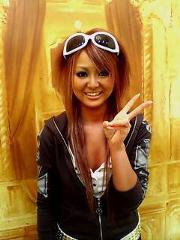Tokyo and Osaka Fashion Vibes: The Trends of Gyaru, Pa Gal and Gal Mama
Kanako Itamae and Michel Lebon
Modern Tokyo Times
Gyaru is a subculture based on a girly-glam image which became extremely popular in the 1990s in major cities like Tokyo and Osaka. This style in turn influenced many regional prefectures in surrounding areas. In time special fashion department stores like Shibuya 109 in Tokyo became synonymous with gyaru fashion trends.
Of course, the natural beauty of gyaru subculture is that new trends could be easily absorbed within the latest Tokyo and Osaka fashion vibes. It is said that gyaru subculture went against the grain but this is too simplistic. After all, the real beauty of major cities like Tokyo and Osaka is that alternative ways of living, dress styles and thinking are free to express themselves. Therefore, fashion subcultures and being independent minded became part and parcel of the fashion scene in Japan.
On the website (http://ilovegyaru.tumblr.com/) I Love Gyaru it is stated that “Gyaru (ギャル) is Japanese for ‘gal.’ They are well known for having big eyes – wearing circle lenses in most cases – big hair that is often in curls and for their beautiful fashion sense. There are many subcultures of the Gyaru fashion including Hime gyaru and Gyaru-kei which are the most popular subcultures of Gyaru.”
In recent times the mingling of more mainstream angles within the gyaru fashion scene appears to be popping up. These are known to be ‘pa gal’ (half gal) whereby young ladies share similar concepts despite being more moderate within the gyaru fashion scene. Indeed, for purists, it may be that pa gal does not fully belong within the gyaru fashion scene. However, the influence of this subculture does appeal and influence many younger ladies.
Dentsu did a survey of younger ladies aged between 18 years of age to 34 years of age. This company is the largest group within the advertizing field in Japan. Therefore, their research is highly valued. Mihoko Nishi, representing Dentsu, stated that 12% of young ladies associate themselves with the gyaru fashion scene. Yet, over 50 per cent of these young ladies also stated that they were pa gal.
Mihoko Nishii commented that “…more than half of the women we surveyed are what we call ‘pa gal’ (half gal), who share similar perspectives…They may not look like gals but they also want to make their eyes look bigger and they like bling products…”
Gal-mama therefore is a natural aspect of the gyaru fashion scene because these are young mothers who refused to bend to the natural images of motherhood in the fashion sense. It could be stated that they are “punkish” in their behavior because they refuse to bend to formality and tradition. Instead, gal-mama ladiesmaintain their fashion consciousness because they refuse to give up on their sense of being – this is very powerful.
The original image of gyaru with bleached or dyed hair, adorable decorated nails, fake eyelashes and amazing makeup remains pervasive. However, the gyaru, pa gal and gal-mama image keeps on evolving. Therefore, with their collective rich knowledge of the latest fashion vibes and new trends, then not surprisingly they are highly valued within the marketing sector when related to fashion.
Lee Jay Walker gave guidance to both main writers.
http://ilovegyaru.tumblr.com/ I Love Gyaru
Modern Tokyo News is part of the Modern Tokyo Times group
http://moderntokyotimes.com Modern Tokyo Times – International News and Japan News
http://sawandjay.com Modern Tokyo Times – Fashion
http://moderntokyonews.com Modern Tokyo News – Tokyo News and International News
http://global-security-news.com Global Security News – Geopolitics and Terrorism
PLEASE JOIN ON TWITTER
https://twitter.com/MTT_News Modern Tokyo Times
PLEASE JOIN ON FACEBOOK
https://www.facebook.com/moderntokyotimes
Some article by Modern Tokyo Times about culture are republished.



